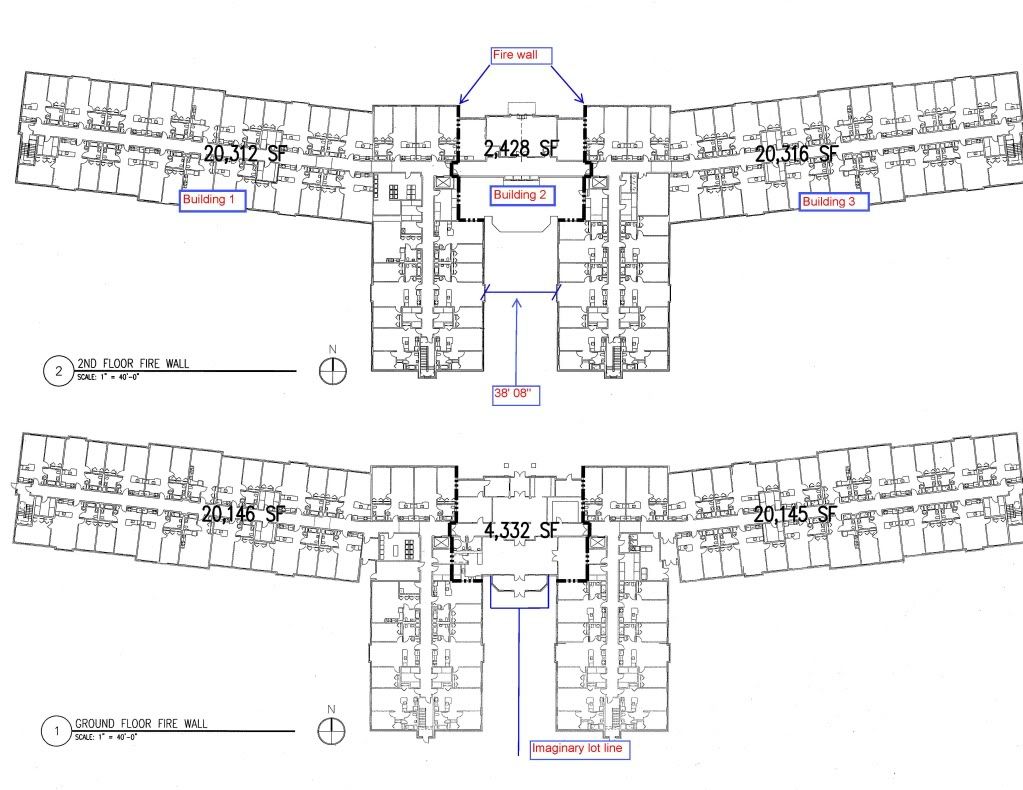See this plan:

Have a project in another jurisdiction...I was asked for my input...I'm interested in what the group has to say.
2006 IBC, R-2, VA, 2 story senior apartments
Table 503 - 12,000 sq. ft. per story 3 stories allowable
They are not providing a NFPA 13 system so they do not qualify for the area increase for sprinklers. They are using fire walls of U336 to create 3 buildings and claiming a full 75% open frontage increase with no supporting calculation on how they came to the 75%. Assume they have the 30' on all 4 sides.
I told my colleague that since these are separate buildings the designer needed to show imaginary lot lines to determine fire separation distance, which I have duplicated on the plan. Sorry I do not have a plan with dimensions of the building.
The questions are:
1. Would you treat each building separately for purposes of the frontage increase?
2. Would you include the exterior walls that face each other in the calculation of #1 above?
3. Would you require openings in the exterior walls of #2 above to meet the allowable area of openings in Table 704.8?
4. Can they put a gazebo in the open space?
5. Can they put a pergola in the space between Bldg 1 and Bldg 3?
Any and all comments welcome!

Have a project in another jurisdiction...I was asked for my input...I'm interested in what the group has to say.
2006 IBC, R-2, VA, 2 story senior apartments
Table 503 - 12,000 sq. ft. per story 3 stories allowable
They are not providing a NFPA 13 system so they do not qualify for the area increase for sprinklers. They are using fire walls of U336 to create 3 buildings and claiming a full 75% open frontage increase with no supporting calculation on how they came to the 75%. Assume they have the 30' on all 4 sides.
I told my colleague that since these are separate buildings the designer needed to show imaginary lot lines to determine fire separation distance, which I have duplicated on the plan. Sorry I do not have a plan with dimensions of the building.
The questions are:
1. Would you treat each building separately for purposes of the frontage increase?
2. Would you include the exterior walls that face each other in the calculation of #1 above?
3. Would you require openings in the exterior walls of #2 above to meet the allowable area of openings in Table 704.8?
4. Can they put a gazebo in the open space?
5. Can they put a pergola in the space between Bldg 1 and Bldg 3?
Any and all comments welcome!
